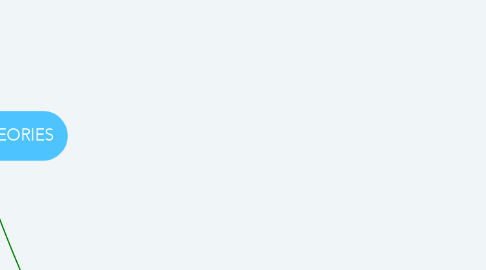
1. Behaviorism
1.1. Classical Conditioning
1.1.1. Chief developer is Ivan Pavlov (1894-1936)
1.1.1.1. Russian Physiologist, mainly known for developing the concept of the Conditioned Reflex.
1.1.2. What is Classical Conditioning?
1.1.2.1. An organism learns to turn a neutral stimuli into a meaningful stimuli by associating a response.
1.1.2.1.1. Unconditioned Stimulus (UCS)
1.1.2.1.2. Unconditioned Response (UCR)
1.1.2.1.3. Conditioned Stimulus (CS)
1.1.2.1.4. Conditioned Response (CR)
1.1.3. Evaluation
1.1.3.1. Helpful to understand aspects of learning.
1.1.3.2. Explains how neutral stimuli become asociated with responses.
1.1.3.3. Helpful to understand anxieties and fears.
1.2. Operant Conditioning
1.2.1. Also called instrumental conditioning.
1.2.2. Developed by B.F. Skinner (1938).
1.2.3. What is Classical Conditioning?
1.2.3.1. Form of learning in which either reinforcement or punishment is applied to modify behavior.
1.2.3.1.1. Reinforcement (reward)
1.2.3.1.2. Punishment (consequence)
1.2.3.1.3. Generalization
1.2.3.1.4. Discrimination
1.2.3.1.5. Extinction
2. Constructivism
2.1. Historical Roots
2.1.1. Philosophy
2.1.2. Psichology
2.1.3. Sociology
2.1.4. Education
2.2. Main Theories
2.2.1. Dewey (1929)
2.2.1.1. Stated that learning is a social activity, achieved thru interaction.
2.2.2. Bruner (1961)
2.2.2.1. A learner can achieve to use any new material as long as the instructios are appropriately given.
2.2.2.1.1. Enactive representation (Action-based)
2.2.2.1.2. Iconic representation (Image-based)
2.2.2.1.3. Symbolic representation (Language-based)
2.2.3. Vygotsky (1962)
2.2.3.1. For Vygotsky, the environment has great influence in how children think and what they think about.
2.2.3.1.1. More Knowledgeable Other (MKO)
2.2.3.1.2. Zone of proximal development (ZPD)
2.2.4. Piaget (1980)
2.2.4.1. His cognitive theory explains how a child constructs a mental model of the world.
2.2.4.1.1. Schemas
2.2.4.1.2. Adaptation processes to go from one stage to another
2.2.4.1.3. Stages of Development
2.3. Learning Approach
2.3.1. Students learn by adding new information to their previous knowledge.
2.3.2. It is affected by the learner's experience and context.
2.3.3. Learning is affected by the learner's own perception of the world.
2.4. Teaching approach
2.4.1. The teacher will provide a collaborative problem solving environment.
2.4.2. The teacher must be aware of students' previous knowledge to guide them properly.
2.4.3. The teacher's role is as a facilitator.
2.4.4. Scaffolding is a key feature for effective teaching.
2.5. Differences between a Traditional and a Constructivist classroom.
2.5.1. Traditional Classroom
2.5.1.1. Strict adherence to fixed curriculum is highly valued.
2.5.1.2. Materials are primarily textbooks and workbooks.
2.5.1.3. Learning is based on repetition.
2.5.1.4. Receptive learning.
2.5.1.5. Teacher oriented classroom.
2.5.1.6. Assessment thru testing, values correct answers.
2.5.1.7. Students work primarily alone.
2.5.2. Constructivist Classroom
2.5.2.1. Curriculum emphasizes big concepts.
2.5.2.2. Students personal interests are valued.
2.5.2.3. Includes manipulative materials.
2.5.2.4. Interactive learning is preferred.
2.5.2.5. Students are allowed to construct their own knowledge.
2.5.2.6. Teacher´s role is interactive, rooted in negotiation.
2.5.2.7. Assessment include work observations. Process is an important product.
2.5.2.8. Students work primarily in groups.
